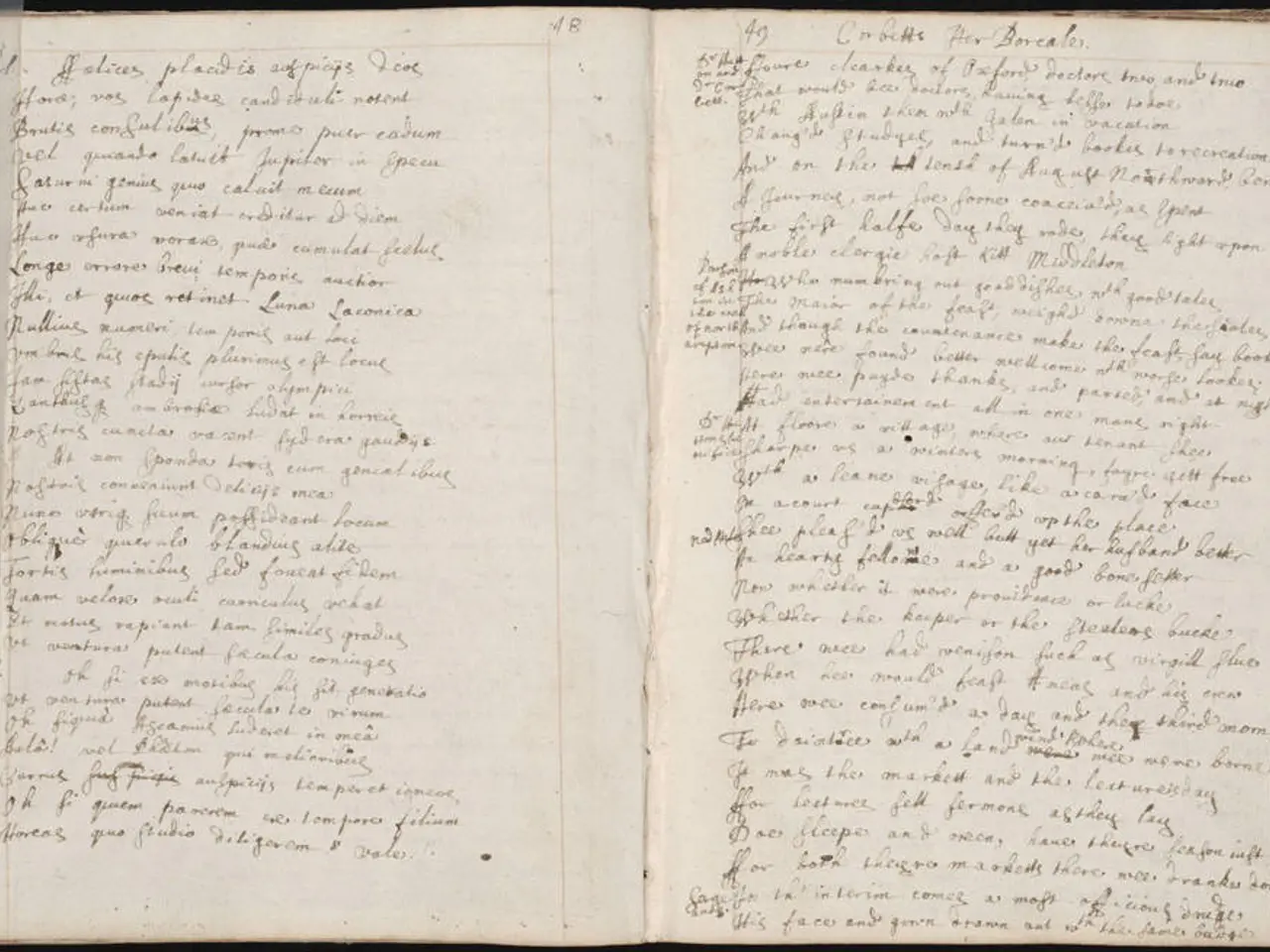Compose a Fresh Narrative: Simply Engage in the Authoring Process
In the world of writing, maintaining a consistent routine and overcoming self-doubt can be challenging. Whether it's the fear of judgment, creative paralysis, or the allure of procrastination, these hurdles can prevent writers from reaching their full potential. However, with the right strategies, it is possible to build sustainable writing habits and foster consistent creativity and productivity.
One of the most effective ways to combat these obstacles is by setting a regular writing schedule. By dedicating specific times each day or week to writing, writers can create a habit that reduces procrastination and resistance. Another approach is breaking work into manageable chunks. By dividing writing tasks into smaller sections or goals, writers can avoid feeling overwhelmed and gain frequent accomplishment.
Creating a conducive writing environment is also vital. Minimising distractions and having a consistent physical or mental space for writing can promote focus and productivity. Using writing prompts or detailed outlines can also help reduce creative paralysis and guide the writing process.
Allowing imperfection in first drafts is another crucial strategy. Accepting that initial writing can be rough can reduce self-doubt that stems from pressure to produce perfect work. Incorporating breaks and self-care can prevent burnout by scheduling breaks, physical activity, or other leisure to refresh creativity.
Seeking feedback and support is another valuable tool. Sharing work with trusted peers or joining writing groups can provide encouragement and constructive input, boosting motivation and confidence. Tracking progress using journals or apps can celebrate milestones, further boosting motivation.
When it comes to overcoming resistance and inertia, the "five-minute rule" can be a useful strategy. Committing to writing for just five minutes can ease into the work and break inertia. Identifying and addressing fears, such as fear of judgment or failure, and challenging these beliefs can also help.
Changing routines or locations can help refresh motivation and reduce mental blocks. Setting external accountability, such as sharing deadlines with others or joining writing challenges, can create external motivation. Focusing on the process rather than the outcome can diminish pressure and resistance.
Binge-writing, on the other hand, is linked to more frequent struggles with writer's block, self-doubt, and creative burnout. Writing consistently, even in small amounts, can be confidence-building and inspiring, especially in the face of emotional challenges and personal obstacles. Writing regularly is associated with increased productivity, frequent creative thoughts, and less struggle with writing.
If one stops writing regularly, it becomes more difficult to begin again due to inertia. Steven Pressfield, in his post "Personal Anguish," suggests that internal catastrophe does not hinder an artist or an entrepreneur. In his book Turning Pro, Pressfield encourages writers to push through difficult times, likening it to athletes playing hurt and warriors fighting scared.
Resistance, procrastination, fear, and self-doubt can quickly resurface when one takes a break from writing. The speaker, in the face of a personal disaster, chose to commit more fiercely to their writing rather than give it up. Inertia, in the context of writing, refers to a tendency to either continue or remain unchanged in one's writing habits.
By employing these strategies, writers can build sustainable writing habits, mitigate self-doubt and burnout, and reduce psychological barriers to writing, fostering consistent creativity and productivity.
- Incorporating breaks and self-care into a regular writing routine can prevent burnout by scheduling pauses, physical activity, or other leisure to rejuvenate creativity.
- Using writing prompts or detailed outlines can help reduce creative paralysis and guide the writing process, promoting focus and productivity.
- Employing the "five-minute rule" can be a useful strategy to ease into writing and break inertia, especially during emotional challenges or personal obstacles.




